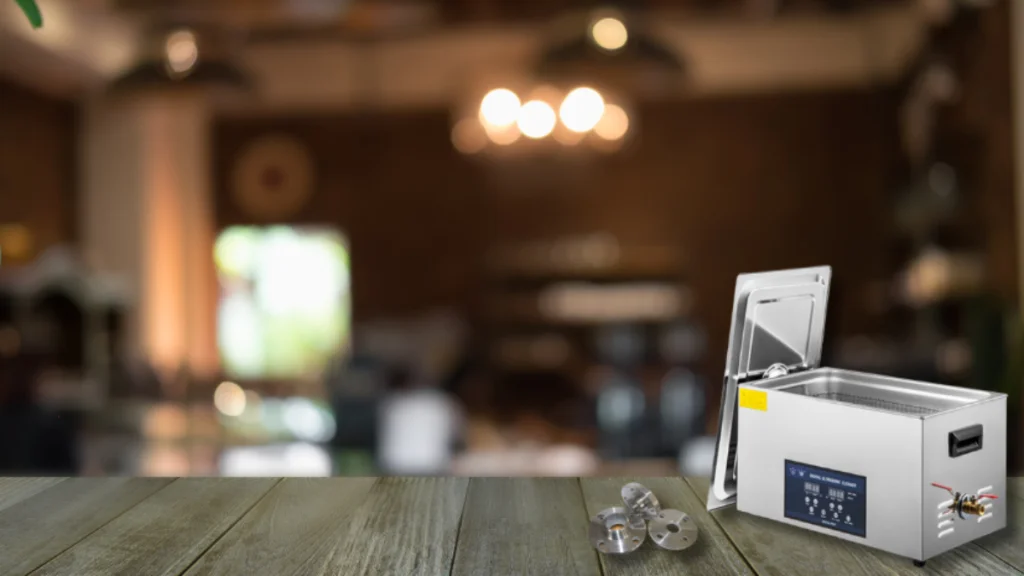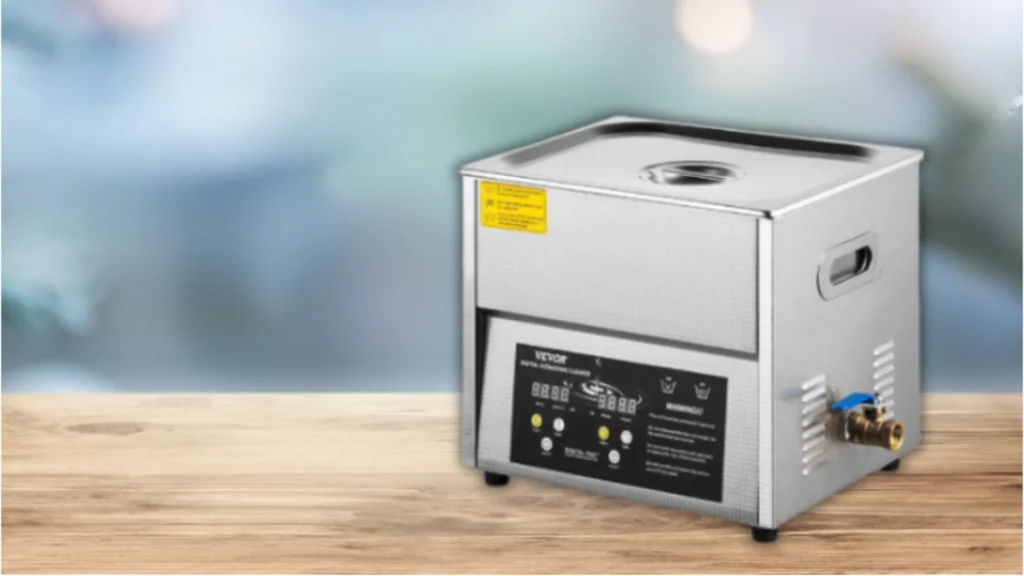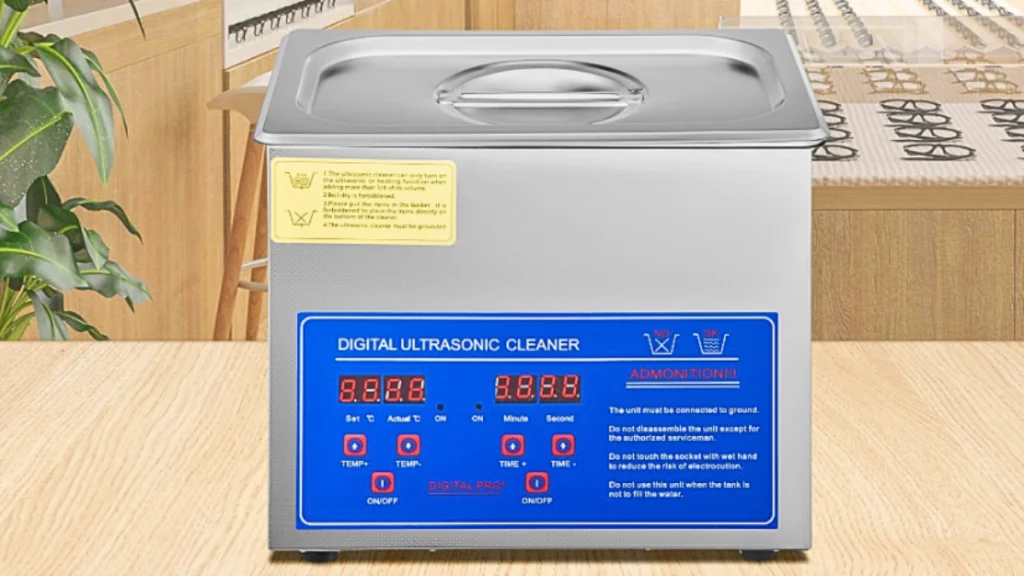Any cleaning or sample preparation task requires careful consideration, and selecting an ultrasonic cleaner depends on many factors before purchasing. While operating an ultrasonic cleaner, a crucial factor is ultrasonic frequency. By using the right ultrasonic cleaning frequency, you can get better results in thoroughness and efficiency and avoid damage while cleaning. The ultrasonic frequency depends on three parts: low, high, and mild.
When it comes to ultrasonic cleaning, understanding frequency is essential for tailoring the cleaning process to the item. The best frequency for ultrasonic cleaning allows you to achieve maximum precision, efficiency, and reliability while minimizing the risk of damaging delicate items. VEVOR ultrasonic cleaners allow you to do the cleaning process in minutes and clean things thoroughly with the heating & timing function.
This article focuses on what is the best frequency for ultrasonic cleaning. So, let’s begin.

The Basics: What is Ultrasonic Frequency
Cleaning efficiency and frequency are intricately linked. As for achieving the desired results, selecting the right frequency is essential. It’s about figuring out what contaminants to eliminate, what kind of material to clean, and how intense you want to get the job done. You need to test and adjust frequency settings for different applications.
With the VEVOR dual-frequency ultrasonic cleaner, you can clean small stuff like glasses jewelry, and big things like carburetors. When cleaning stuff with complex-shaped surfaces or blind holes, all ultrasonic cleaners do better than single-frequency ultrasonic cleaners that use 40KHz and 28KHz.
Ultrasonic cleaner frequency relates to the vibrating sound waves faster than the human ear can hear. Across various industries, the unique characteristics of ultrasonic cleaning frequencies make them valuable.

Why Does Ultrasonic Frequency Matter in Cleaning
The ultrasonic cleaner involves high-frequency sound waves to create cavitation, leading to high scrubbing power and cleaning efficiency. Various fields, including cleaning, medical imaging, and industrial testing, rely on wave propagation, cavitation, and material interactions.
You sometimes see the tiny bubbles in a liquid during the cleaning process-cavitation is responsible for its growth and formation. At specific frequencies, ultrasonic frequency creates cavitation. In cleaning or treating, these bubbles erupt and produce shock waves, microjets, and powerful localized energy. Look at the step-by-step process of how ultrasonic waves create cavitation at specific frequencies.
Ultrasonic Waves Generation
Within an ultrasonic cleaning system, a transducer generates ultrasonic waves. It then exchanges electrical energy into mechanical vibrations and creates high-frequency sound waves.
Cleaning Solution Propagation
The ultrasonic waves propagate through the cleaning solution, which is a containing detergent or other cleaning solution. Then, these ultrasonic waves travel through the cleaning solution.
Creation of Bubbles
Rarefaction causes the pressure to drop, and vapor packets and small gases in the liquid start to expand and form microscopic bubbles. These bubbles are usually of micrometers in size.
Bubbles Growth
During the rarefaction phase of the ultrasonic wave cycle, the bubbles grow as more vapor enters the low-pressure region. The oscillations of the surrounding liquid molecules help it grow.
Collapse of a Cavitation Bubble
The cavitation bubble collapse is a dynamic process. Rapid bubble implosion generates shock waves and high temperatures. These effects produce intense localized energy.
Shock Waves and Cleaning Action
These cavitation bubbles generate shock waves after collapsing and travel through the cleaning solution. That’s how powerful scrubbing action is created by shock waves, microjets, and collapsing cavitation bubbles.
Repetition Process
This cavitation process repeats as the ultrasonic waves propagate through the cleaning solution. By continuously generating and collapsing bubbles, cavitation enhances performance.
Ultrasonic Cleaner Frequency Effects on Different Materials
The ultrasonic frequency depends on the specific cleaning application characteristics for the desired outcome. You should understand the effective cleaning, material selectivity, and penetration depth for multi-frequency ultrasonic cleaners.
VEVOR ultrasonic cleaners allow you to set the frequency between 28HZ and 40HZ based on the materials you’re using. Furthermore, it creates scratches, which is great for businesses and commercial use.

Selecting the Best Frequency for Ultrasonic Cleaning
Frequencies below 40 kHz are low ultrasonic frequencies. Usually, there are 26 KHZ and 28 KHZ cleaning frequencies. This ultrasonic frequency setting suits glass, metal, or porcelain parts with heavy contamination. You can clean engine parts contaminated with oil and grease, production residue-coated jewelry, and medical equipment.
However, the most common frequencies are between 40 KHZ and 200 KHZ. Softer parts, hard coatings, and solid microstructures suit this ultrasonic cleaner frequency. This includes solar cells, hard disks, and LCDs made of aluminum and ceramics. With a mid-range ultrasonic cleaner frequency, you get a rapid and complete cleaning for materials that aren’t easily damaged.
The vulnerable components must be cleaned at high frequencies, from 200 kHz to the MHz range. The highest ultrasonic cleaner frequency delivers gentle cleaning and cavitation bubbles with less energy. It’s not a good idea to clean parts at these frequencies if they have soft surfaces, delicate coatings, or fragile microstructures. This ultrasonic frequency range suits semiconductor components, LEDS, silicon wafers, and medical devices.
VEVOR Ultrasonic Cleaner Frequency Helps You While Selection
With a wide range of experience in ultrasonic cleaner frequency, VEVOR has satisfied millions of customers worldwide. Now, choose the best ultrasonic cleaner for an industrial or a household that suits your application best.
Additionally, VEVOR provides a friendly design for better customer usage, like a water drain connector, an LED option to display real-time heat and temperature settings, and a portable handle. With three cleaning modes and temperature adjustment settings from 0-80℃ to 0-30 minutes, you get your valuable like brand new.
You get a dual-frequency ultrasonic cleaner in this VEVOR ultrasonic cleaner that offers a frequency adjustment setting for multiple items. Use 40 KHZ for complex objects and 28 KHZ for smaller objects.
FAQs About Ultrasonic Cleaner Frequency
What is the Frequency of Cleaning?
If you wonder what is frequency of cleaning is, the frequencies range from 15 KHZ to 40 KHZ. That’s an ultrasonic cleaner frequency based on cleaning soft and complex parts.
What is meant by demystifying Ultrasonic Frequency?
The best ultrasonic cleaner frequency simplifies the technical aspects to empower users to choose the frequency in their cleaning applications, just like a VEVOR that provides adjustable heating work time and dual ultrasonic frequency range.
Final Words
You must know your object type and characteristics with a dual-frequency ultrasonic cleaner to prevent damage. VEVOR ultrasonic cleaner frequency allows you to choose the best option of high and low according to your material, with a top lid to reduce noise and prevent heat loss. Get your jewelry clean at home with VEVOR portable ultrasonic cleaner at a reasonable rate at your doorstep.





